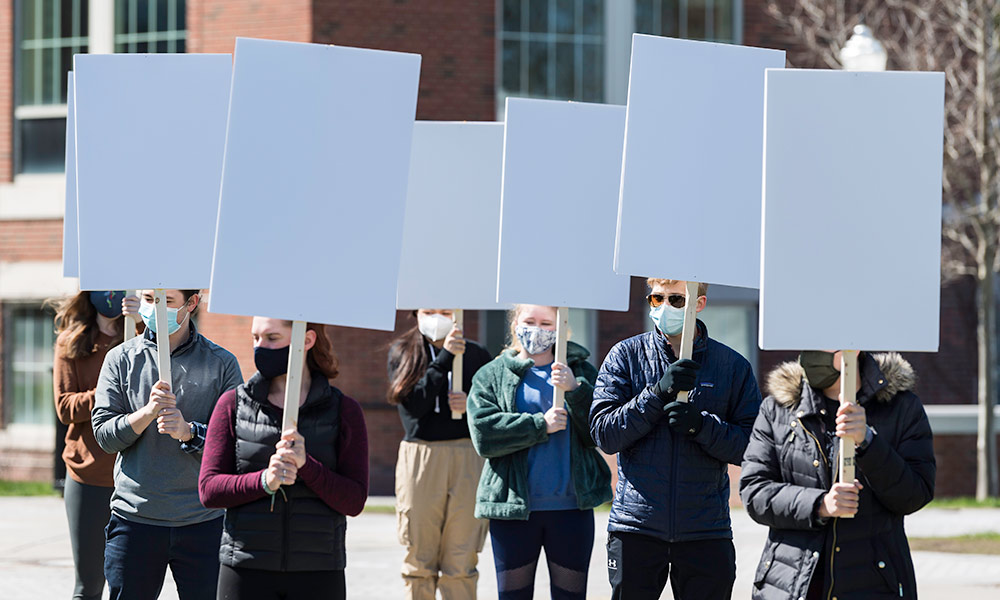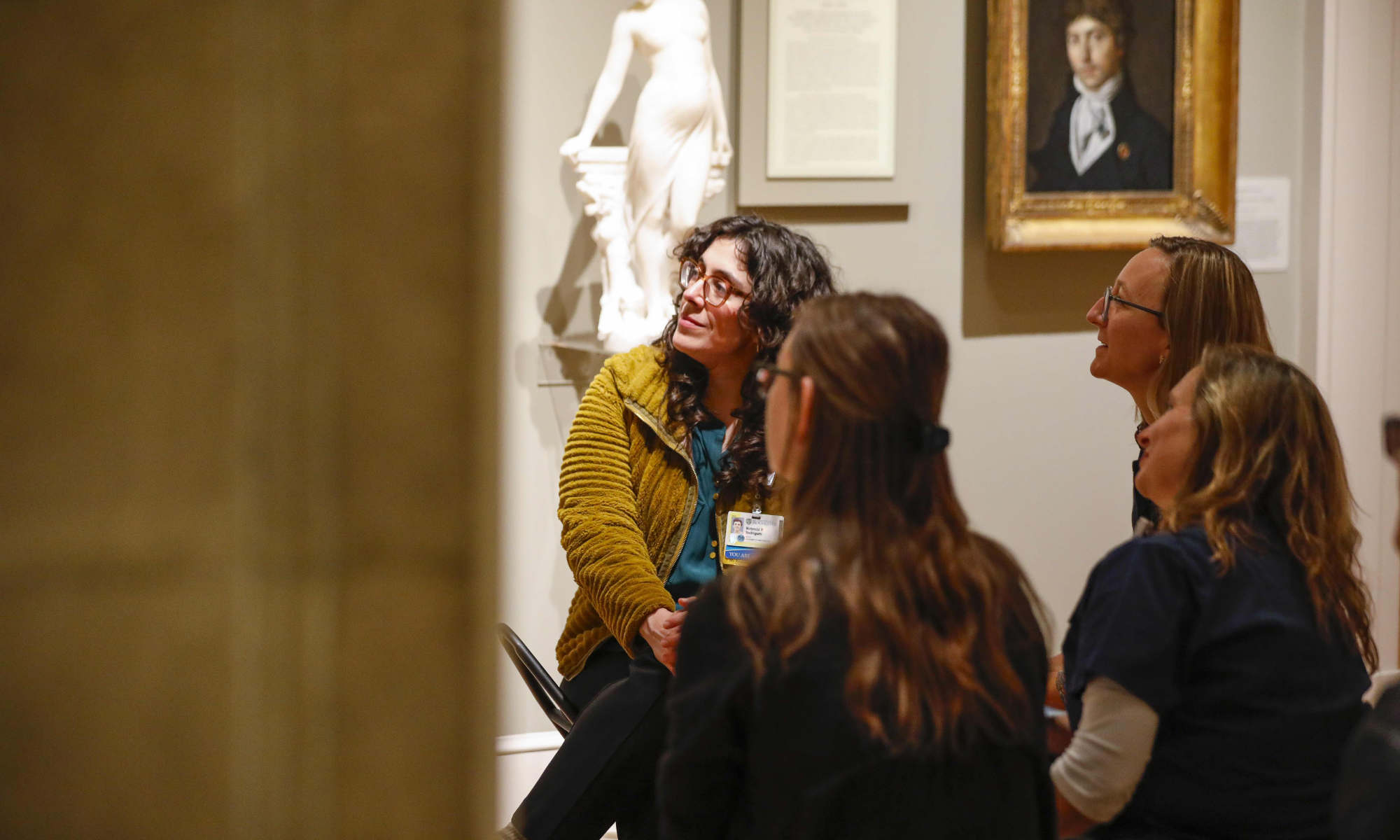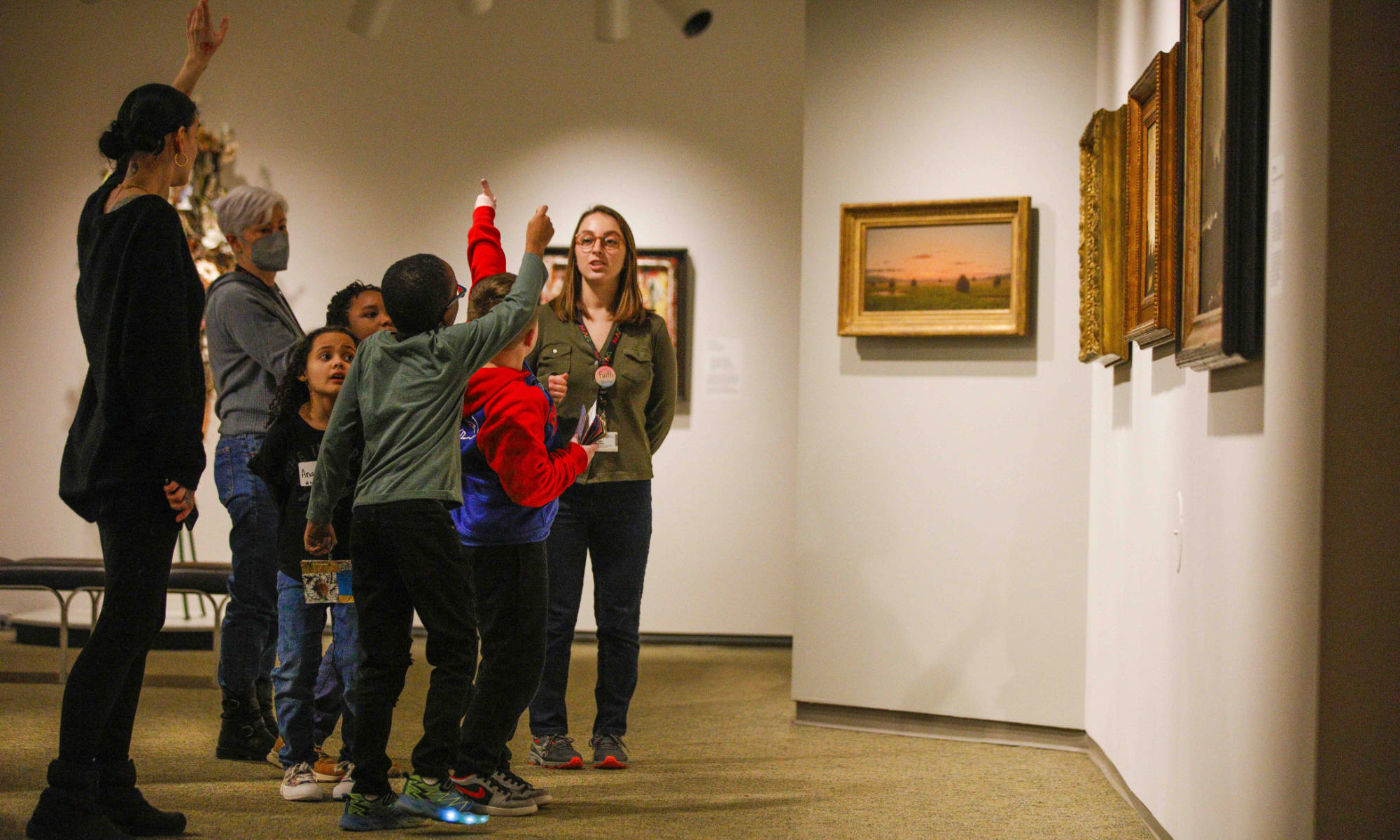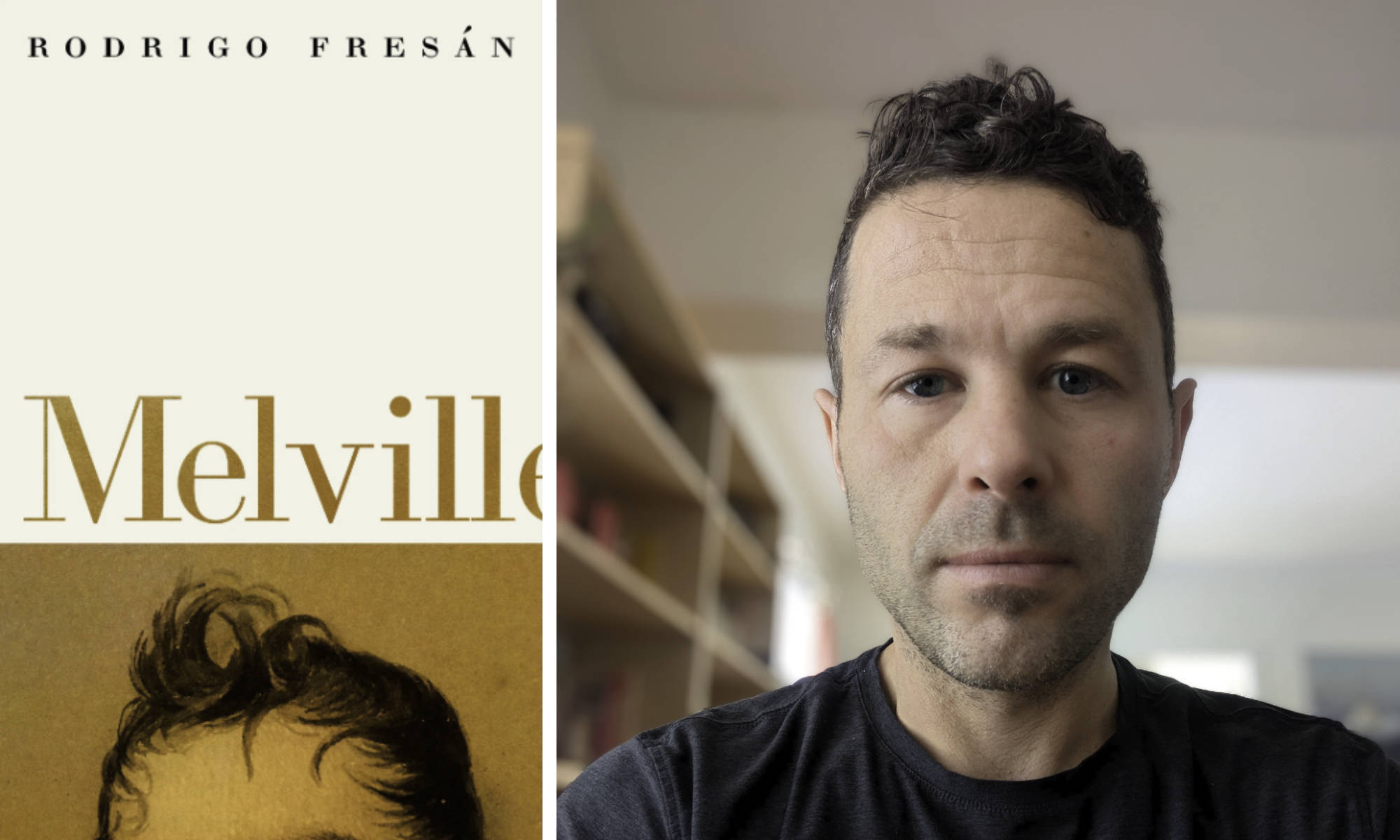Students present iconic dance and movement work to inspire thought about the pandemic and the power of protest.
A reenactment of Anna Halprin’s iconic Blank Placard Dance—organized and facilitated by the students and faculty of the University of Rochester’s Program of Dance and Movement—is set to happen in the city of Rochester’s 19th ward neighborhood on Saturday, May 1.
Blank Placard Dance originated in San Francisco as a choreographed silent march in 1967. At the time, protests were illegal, and Halprin conceived the piece as a reaction to the civil rights movement’s social unrest and antiwar movements.
The piece involves multiple performers—movers and musicians—holding blank protest signs as they weave in a parade-like route highlighting areas of significance. The Rochester restaging, from 12:30 to 2:30 p.m. EDT, begins at the Ford Street Bridge (at the intersection of Wilson Boulevard and the Ford Street Bridge), and ends at St. Monica Church at 831 Genesee Street in Rochester.
“There will be performers, who will interact with the community, or the ‘audience,’ ” says Rose Pasquarello Beauchamp, a lecturer in the Program of Dance and Movement. “There will be planned stops along the route, with spoken word performances as participants interact with community members and ask, ‘What is important to you?’ ” Beauchamp says. Participants will then write their answers on sticky notes that make their way back to the blank placards.
Versions of Blank Placard Dance have been recreated in cities worldwide, including Sydney, Australia, and Montreal, Canada, each with a specific purpose. Faculty in the University’s dance program were inspired to stage the work by social movements in the United States, including recent protests in the Greater Rochester area. Meanwhile, the ongoing challenges presented by the pandemic to the performing arts motivated the organizers to consider different types of dance performances.
“From the beginning of the planning process, it was important to be true to Anna’s envisioning of dance,” says Beauchamp. Halprin, now 100 years old, and her daughter Daria granted the dance program permission to restage the dance.
“I’m interested in seeing what new elements Rochester will bring to this dance,” said Rosario Sammartino, psychologist, artist, and core faculty member at the Tamalpa Institute, during an online workshop about Halprin’s work that was hosted earlier this year by the dance program. Founded in 1978 by Halprin, the Tamalpa Institute offers expressive arts training programs and workshops for healing, education, and social transformation.
Performance preparation involved community participation
The students collaborated with residents in the local community to develop a map for the final event. This research was essential in order to show areas of the city that were equally important but beyond the range of walking distance from the University. The pandemic, city guidelines, and the timing of the restaging limited where the students could travel outside of the University. Still, the mapping data will be present at the culmination of the event.
Anna Remus ’21, a Chicago native, visited the Rochester Public Market twice to ask people questions: “Where in Rochester means something to you? Where is the heart of Rochester?” She points out that researching from the public market was a challenge since people felt the need to respond with “the public market.”
“But there still were some great responses,” says Remus. “The dance should grow out of the community, and a lot of the preparation has been in an ethnographic way, so this is a lot of what I’m familiar with from my studies in anthropology,” says Remus. While not a dance major, Remus began her college career with a few dance courses and came full circle during her final semester. She will graduate with majors in Spanish and archaeology, technology, and historical structures.
“Ultimately, the University has an impact, in ways both good and bad, on our adjacent neighborhoods. So we decided to work with people in the PLEX [Plymouth–Exchange] neighborhoods, the 19th Ward, to create the route through those neighborhoods,” says Beauchamp.

A way to begin ‘meaningful dialogue’
To encourage participation from the community in the Blank Placard Dance event, Beauchamp and her students reached out to local businesses, community members, leaders, and neighborhood organizations, such as St. Monica Church and the Southwest Area Neighborhood at the Montgomery Neighborhood Center, as well as local performing artists.
Local activist and award-winning storyteller Almeta Whitis, for example, worked closely with the dance program to identify the routes’ key locations. “This seminal event carries with it the promise of combining the arts with the power of listening to the previously overlooked and undervalued voices of Rochester’s marginalized communities of people—who are present, definitely present, yet unseen as the more privileged go about living their everyday lives,” says Whitis. “We must use the power of the arts to stimulate critical thinking and engage one another in a meaningful dialogue.”
There are about 40 participants expected to walk in the dance, including students, African drummers, and area poets. The community is invited, and there will be a livestream of the event on Program of Dance and Movement’s Facebook page. Placards have been dropped off at the Arnett Branch Library, Phillis Wheatley Community Library, and both the Plymouth Gardens and Seneca Towers senior living communities.
“The University has an impact on the community, so the program’s goal is to give a voice to our neighbors,” says Missy Pfohl Smith, director of the Institute for the Performing Arts. In the fall, Rush Rhees Library will curate an exhibition of Rochester’s Blank Placard Dance. “We hope this will not be the end of these conversations, but the beginning,” says Smith.
Read more
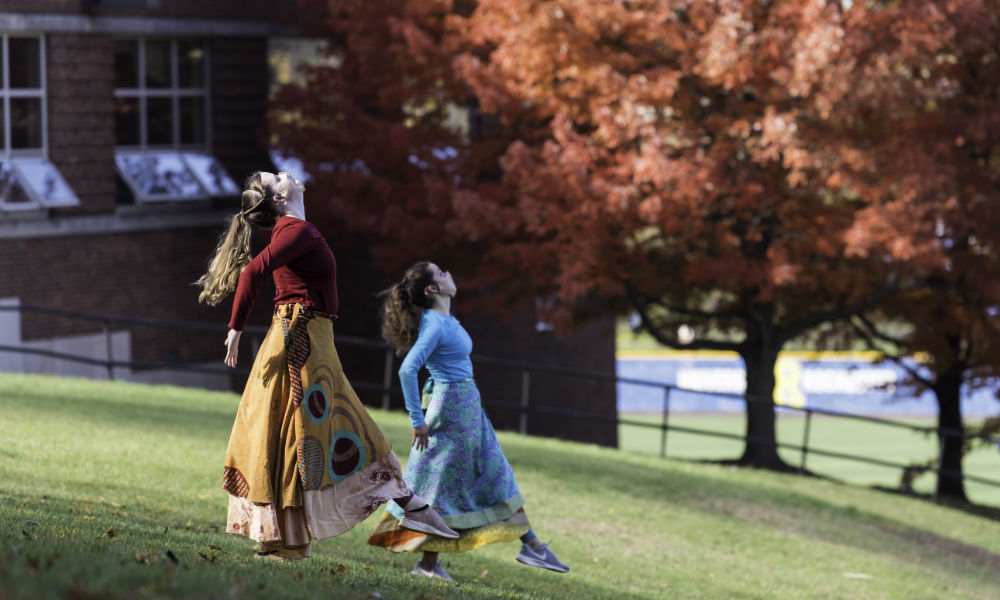 With ‘Flight of Sites,’ students and faculty set choreography to campus architecture
With ‘Flight of Sites,’ students and faculty set choreography to campus architectureFlight of Sites: Dances in Innovative Spaces, a two-day concert featuring student and faculty choreography, embraced both an outdoor and online audience experience.
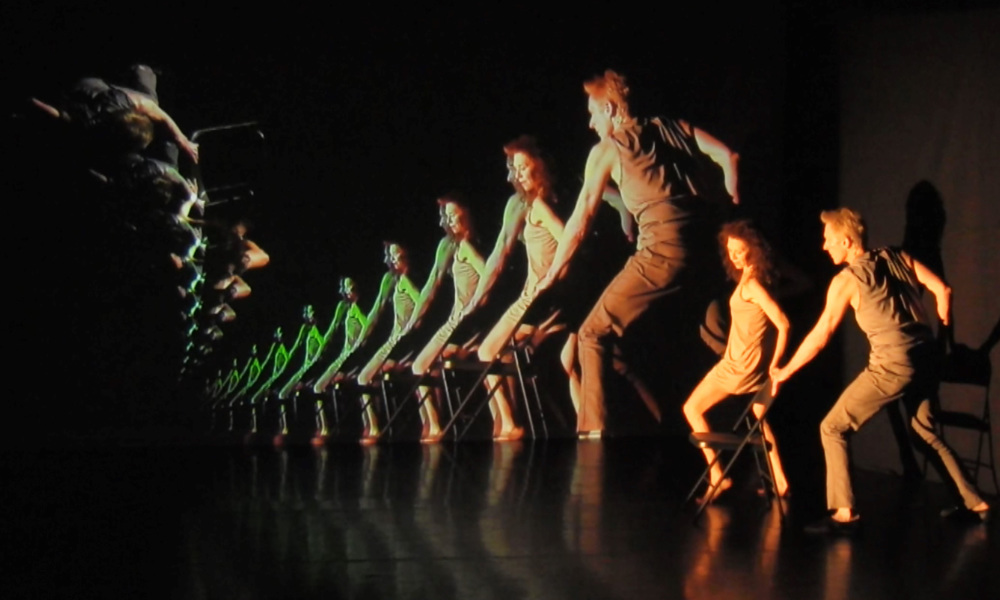
inspireDANCE moves online to connect the dance community and beyond
The virtual version of the annual inspireDANCE festival welcomed everyone to learn new dance styles for free from top choreographers and instructors.

